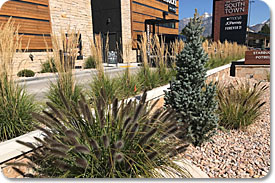 Some might argue that urbanization is one of the best things that have happened to humankind. Of course, a large number of people living together in concentrated areas come with several benefits. Most notably, it provides the opportunity for more efficient use of resources.
Some might argue that urbanization is one of the best things that have happened to humankind. Of course, a large number of people living together in concentrated areas come with several benefits. Most notably, it provides the opportunity for more efficient use of resources.
However, urban center development significantly changes the natural landscape. Tall buildings and roads now replace tall trees and shrubs, consequently affecting the lives of several organisms that depend on them.
That’s why preserving biodiversity is a growing concern in urban landscape development. In this post, we explore ways to sustain a variety of plant and animal life in urban development.
Understand, protect and restore
In nature, plant and animal species are sustained in an intricate balance. Tweaking just a part of the ecosystem can have unintended consequences. That’s why it’s important to understand the ecosystem before any landscape design project commences.
A good way to do that is by observing the wild to see the connection between organisms. But more than just understanding, conscientious actions must be taken to protect the ecosystem. Design options with potentially detrimental effects should be avoided.
What’s more, areas that are already degraded should be examined to see if there are ways they can be restored.
Stick with native species – as much as possible.
In today’s day and age, the need to efficiently use resources is greater than ever. Because native species are better adapted to local environmental conditions, they generally require a lesser amount of resources for maintenance.
What’s more, introducing foreign plant and animal species might have better aesthetic appeal or even seem like a great idea. However, foreign species can sometimes disrupt the native ecosystem and pose threats.
That’s why caution should always be taken when incorporating non-native elements into landscape design because it can be difficult to anticipate future impacts.
Diversify
As the name suggests, diversity is at the very heart of biodiversity. You see, diversity allows for a more robust and resilient ecosystem. This, in turn, helps to minimize the impact of diseases and pests. What’s more, it adds better flavor to the design.
As a heuristic, when choosing plants for your design, you shouldn’t select more than 30% from the same family, 20% from the same species, and 20% from the same genus. And remember, diversity is not a leeway to introduce foreign species without proper analysis. You can still achieve diversity with native species.
Minimize light and noise pollution
With the lights from buildings, cars, street lights, buildings, and the noise from speakers, cities are constantly bustling with life. And many times, this can cause psychological stress for not only humans but also animals. For instance, nocturnal creatures will have to deal with lights and even the dangers of crossing the road at night.
Since the goal is to attract – and not repeal biodiverse wildlife – here are some things to consider in the design process. Keep lights away from resting spots like tall trees, ponds, and hedges. Protect certain areas so that they maintain their naturalness.
Provide wildlife corridors and connections between green spaces
Urban development affects the ability of wildlife to travel, find food, water, and even mate. That’s why it’s up to the landscape designer to incorporate options that will enable wildlife to thrive even with the change in the structure of their habitat.
Here are some ideas. Shrubbery or bush provides a physical barrier for people and large animals, but it allows smaller animals like hedgehogs to pass through, under, or along.
Soft engineering techniques can also be used to build wildlife corridors. Wild corridors are areas of habitat connecting wildlife populations separated by human activities or structures.
Cut back on lawns
Lawns seem like a great idea. At least, having a vast expanse of short grass can give the impression of “looking green”. However, lawns come with lots of drawbacks.
They consume a whole lot of water from irrigation. And because of their exposure, they offer little benefit to animal species. Hence, they are not a good choice if biodiversity is the goal. That’s why lawns should be limited to recreational areas as much as possible.
Use organic maintenance methods.
To support urban biodiversity, avoid the use of chemical fertilizers and pesticides because they can harm good bugs. For instance, bees are very sensitive to pesticides and fertilizers. And because they play a crucial role in the ecosystem, they mustn’t be killed indiscriminately. That’s why only organic maintenance methods should be employed.
Wrap Up
Because we share this planet with several other organisms, we have an ethical responsibility to ensure that we preserve local species and ecology. But if we refuse to do so, we would be harming ourselves in the long run because all life is inextricably linked.
This can easily become a nuanced topic with complexities – but we are here to help. Contact us here today. We look forward to hearing from you!








